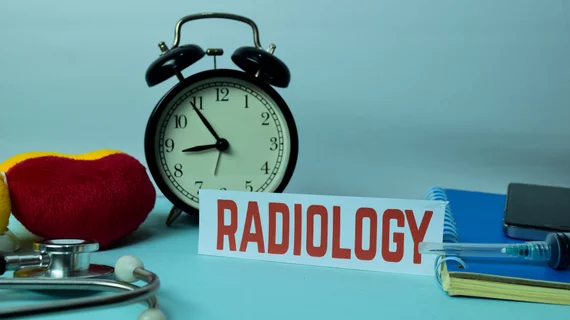‘Hungry judge effect’: How time of day can impact radiologists’ MRI reads
Time of day appears to impact radiologists’ MRI reads, according to new data published Monday.
Previous research has tracked this phenomenon—sometimes referred to as the “hungry judge effect”—with fatigue, workload and circadian rhythm reshaping physicians’ decision-making. Imaging experts with NYU Langone Health in New York set out to better understand the effect as it relates to prostate MRI reads, sharing their work Aug. 5 in the European Journal of Radiology [1].
Across over 35,000 interpretations handled by 26 radiologists, researchers discovered a significant association between hour of day and average Prostate Imaging–Reporting and Data System (PI-RADS) results. In particular, physicians more frequently assigned malignant scores later in the day, when they were likely facing fatigue.
“These findings suggest chronobiological factors may contribute to variability in radiological assessments,” Anton Becker, MD, PhD, an assistant professor in the Grossman School of Medicine’s Department of Radiology, and co-authors concluded. “Though the magnitude of the effect is small, this may potentially add variability and impact diagnostic accuracy.”
For the study, NYU researchers retrospectively analyzed all prostate MRIs performed at their single institution between 2015 and 2023. They also pinpointed providers’ PI-RADs scores and timestamps when reports were submitted. The median number of reports per radiologist was 734, with an interquartile range between 498 and 1,376.
Becker et al. discovered a “small but significant trend,” noting gradual change in average PI-RADS scores as the day progressed. Moreover, scores did not monotonously change throughout the day, but rather they peaked toward the end of the shift. Performing a regression model for each rad showed that five physicians demonstrated significant associations on an individual level. This impacted 7,841 MRI reports. However, removing the five radiologists’ results from the study, “the pattern persisted” among the other 21.
“The findings substantiate the notion that physiological and psychological variations can introduce a source of variability or 'noise' into the assessment and thus influence radiological assessments. Understanding these influences may contribute to optimizing work schedules and decreasing variability in radiology,” the authors advised. “Further research would be required to elucidate these temporal effects and to develop effective strategies for their mitigation. Incorporating artificial intelligence assistance may offer one potential solution to offset the impact of human fatigue and other chronobiological influences.”
Read more, including potential study limitations, at the link below.

